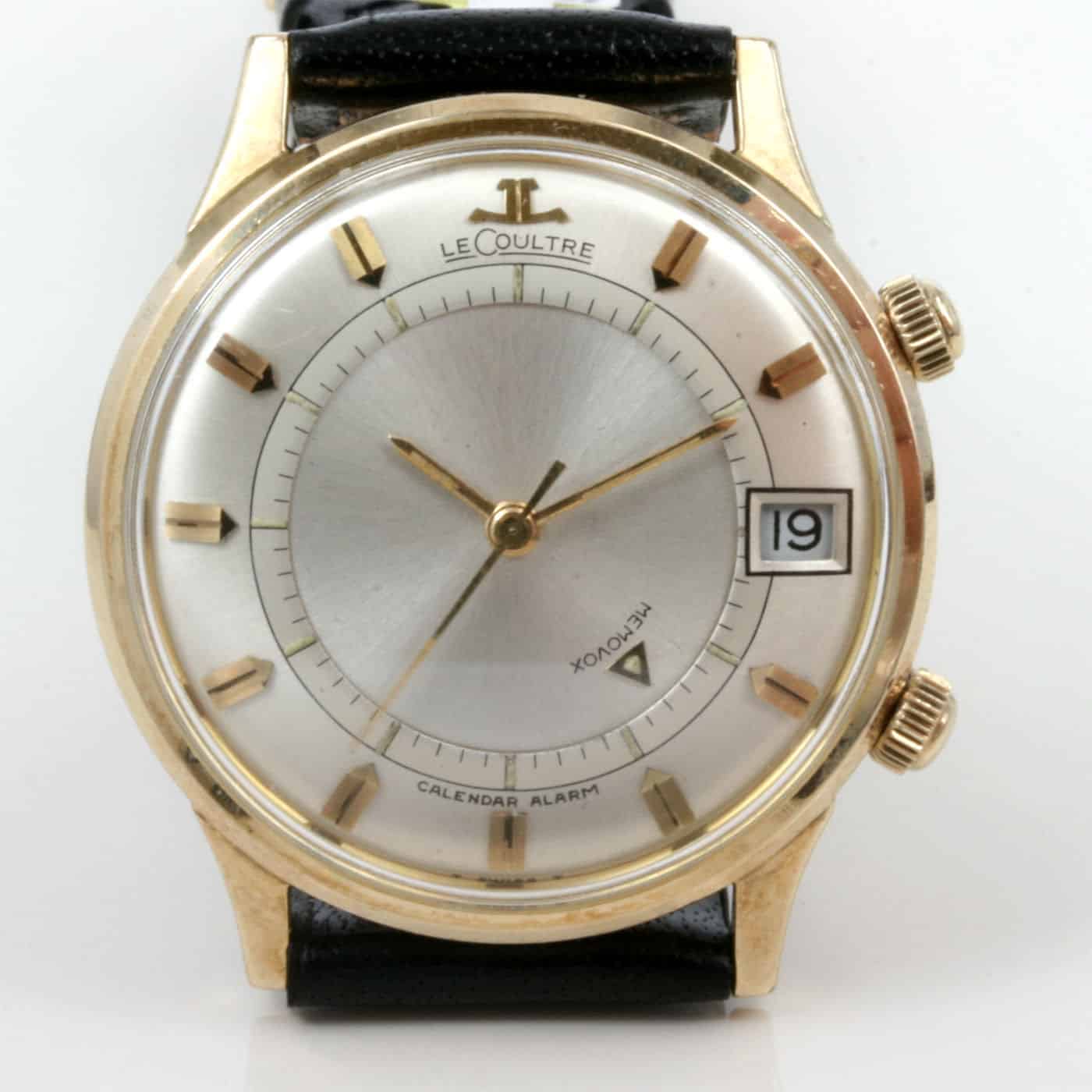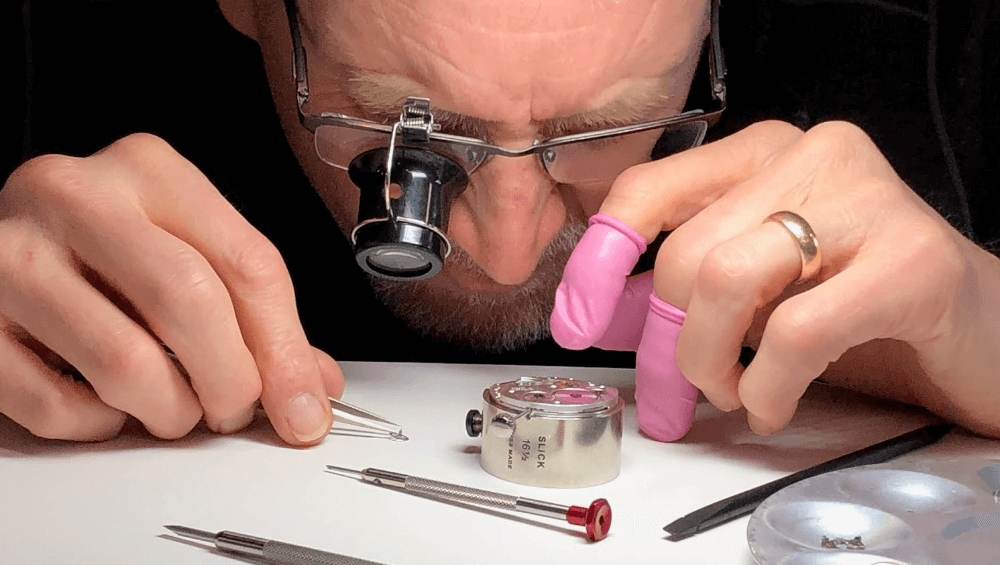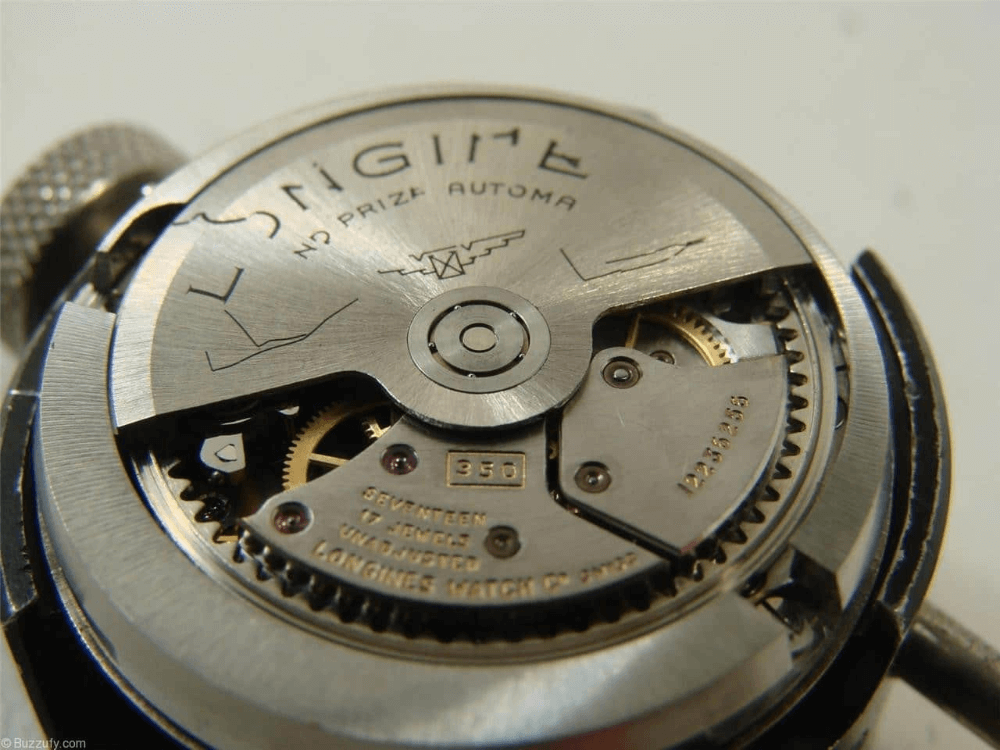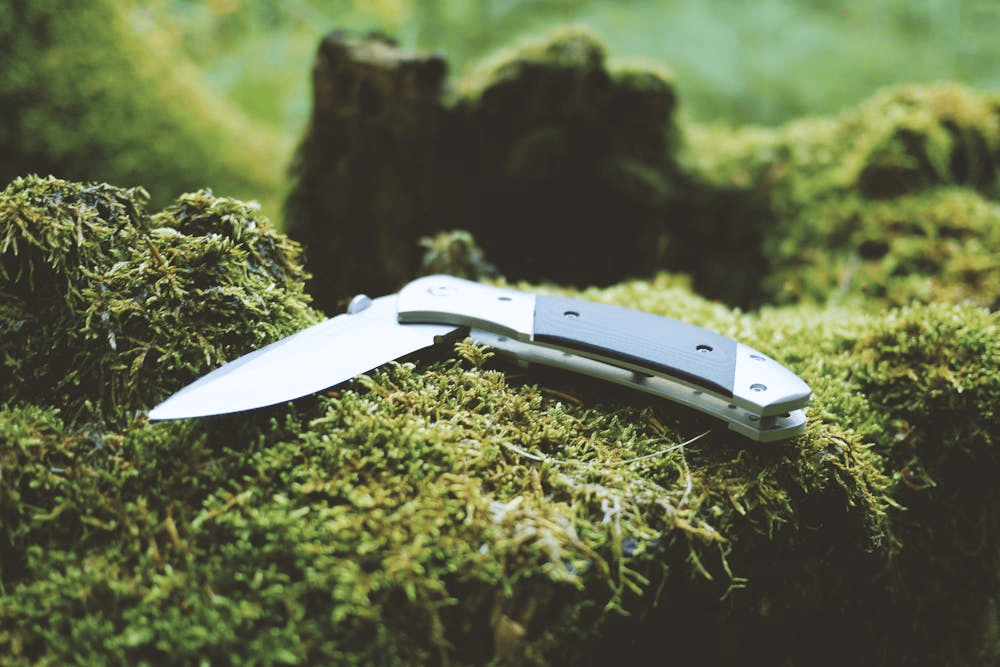The mainspring of a mechanical watch will be tightened either by the turning of the crown on a hand-wound watch or by the swinging action of the rotor for an automatic.
A watch movement should be treated with the respect that the care of its manufacture warrants.
Crystal
One of three materials is traditionally used for the crystal or glass dial cover: plexiglass, crystal (which is in fact quartz crystal ), and synthetic sapphire. The third material has the same molecular structure as a natural sapphire, but has been produced in a laboratory, It is by far the most expensive to produce and is therefore used only on the higher-quality pieces or those watches made to withstand rough sports usage. The sapphire glass is scratch-resistant, but beware – nothing is totally scratchproof and, if you hit it hard enough, it will still break! Older sports watches tend to come with a plexiglass crystal as, until recently, it was not possible to shape the sapphire glass into anything but a lever surface, which was unsuitable for some sports watches. Quartz mineral crystal, which is somewhere between plexiglass and sapphire crystal in strength, is used on many “everyday” watches you come across.
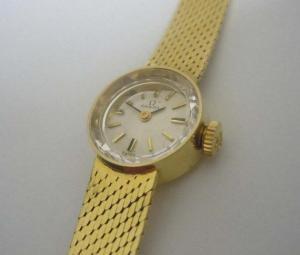
Materials
Disregarding any precious stones which may be present on a watch case or bracelet, the list of materials used by the watchmaking industry both past and present is as extensive as it is varied. Gold has been used in fine pieces since the beginning. Most versatile of metals, it is used in both heavy sports watches and tiny elegant cocktail pieces. Surface scratches may be polished out; stones may be set into it; its color can be changed with the addition of other metals; and its value may be higher or lower according to the carat weight. The finish can be enameled, left highly polished, or be brushed.
What Looks Like Gold . . .
Rolled gold was used widely prior to the 1960s, before technology made gold plating a better proposition – indeed, today’s techniques have enabled some manufacturers to set a high standard of durability. Rolled gold is achieved by placing a layer of base metal between two thin layers of gold and running the resulting “sandwich” between a set of rollers (hence the name “rolled gold”), bonding the three layers together. Gold plate is made by putting a piece of base metal into an acid bath in which gold particles have been suspended and passing an electric current through: this bonds the gold onto the base metal. It is not always easy to differentiate between the two materials, though most gold plate has a slightly “harder” shine when given a polished finish.
Silver has also been employed in the manufacture of wrist watches, but not nearly so extensively as stainless steel. The latter metal is the material most commonly used for sports watches both old and new, with or without the addition of gold or gold plating. Stainless steel is virtually unalterable, and it is possible to find early wrist watches made of steel which show remarkably few signs of wear and tear.
Other materials used in the more contemporary pieces include several organic materials: pieces of rock, slabs of shell, and even wood. Man-made materials include not just steel, but also ceramics, tungsten carbide, strontium titanite, fiberglass, and plastic. The Rado watch company, in particular, has done a lot of work experimenting with new materials; and the resulting pieces are outstanding in design and durability, combining as they do both style and strength.
Straps and bracelets
When a wrist watch is made, either a strap or bracelet is incorporated into the original design, the choice depending on the intended use of the watch. Although earlier pieces usually had leather straps, with extensions for wearing over sports wear, metal bracelets soon followed because they were more durable or, for dress watches, more stylish. A fine gold bracelet would be used to emphasize the elegance of the watch itself. Some ladies’ watches had ribbon straps; naturally, very few of these models retain the original strap.
Logically, if the metal bracelet is the original, it will be of the same material (or combination of materials) as the watch case. It will probably be stamped with the watch manufacturer’s name or logo. If a leather strap is used, check the buckle: again, it it is the original, it will have some identifying marks on it.
It is very important to look carefully at the strap or bracelet when buying a vintage watch, mainly, of course, from the point of view of safety. If the strap or bracelet has deteriorated beyond repair or is absent altogether – a fairly frequent occurrence – try to replace it with one as close as possible to the original design. In some cases, the watch manufacturer may be able to assist you with information as to what the original strap or bracelet design was like.
Water Resistance
Both the case back and the crystal need to be firmly in position to maintain water resistance in a watch. This is generally expressed in one of three ways: atmospheres (ATM), feet or meters. Since 1927, watches that are capable of being worn in the water without suffering damage have been manufactured. Since then, efforts have been made to produce watch cases that are more and more watertight and able to withstand higher levels of water pressure. If you have just purchased a watch and its water resistance is in doubt, get it checked – a rusty mechanism may spell the death of a watch, especially if it is left without expert attention.
Antimagnetism
Apart from moisture, magnetism is the other main problem factor for a watch movement. We are surrounded in our daily environment by electrical equipment, some of which gives off a powerful magnetic field, and this can adversely affect the moving parts of a watch. Electric motors, loudspeakers, televisions, and video recorders seem to be the main culprits as far as watches are concerned because they are household items, but magnetic fields are even-present outside as well as inside.
Magnetism will affect any watch parts which are made from ferromagnetic substances: for example, iron, nickel, or cobalt. The parts concerned with the accuracy of the watch are generally the most vulnerable. If the ferromagnetic metal in the movement comes into contact with a magnetic field, it will become magnetized and will try to realign itself, obviously affecting the working order of the whole mechanism and, in some instances, even causing the watch to stop completely.
The International Watch Company (IWC) of Schaffhausen, Switzerland, has done much research into antimagnetism. More than fifty years ago, IWC’s technicians realized that if the whole watch movement were housed in a jacket which conducted magnetic fields, it would prevent the buildup of magnetic forces inside the movement. This jacket consists of a ring, a base, and the dial of the watch itself, which is made of antimagnetic soft iron. The company’s flagship piece in this line is the Superantimagnetic Ingenieur. This watch, still in production at the time of writing, is worth having in any collection; the alloy used to make the antimagnetic jacket is no longer available, and production must soon cease.
